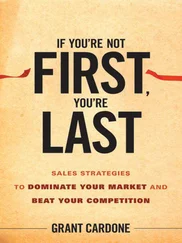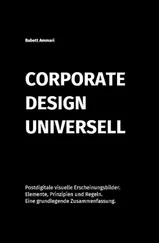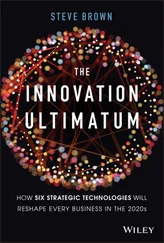1.2. CSR as a lever for adapting corporate governance
This interdependence means that companies have an interest in finding solutions to societal challenges. With the CSV approach, CSR must be understood as a set of discourses and practices, which work towards extending corporate governance to its various stakeholders (Dupuis 2008). A stakeholder refers to a group or individual that can affect or is affected by the achievement of the organization’s objectives (Freeman 1984). Nowadays, it has become imperative for companies to place their overall strategy within a CSV-based perspective and better identify their CSR, by explicitly taking into account the expectations of their internal and external stakeholders. Therefore, the company is at the heart of a set of relations with stakeholders that are no longer just organizational (shareholders and management), but also involve internal (employees) and external stakeholders, who have an interest in its activities and decisions. The sharing of returns and externalities must then be regulated through quasi-contractual arrangements (Freeman 1984). With CSV, the integration of societal issues must be thought of as a strategy in its own right, by approaching these issues as a business problem (Porter and Reinhardt 2007). To do so, this integration must be seen as an opportunity to create financial and societal performance.
The integration of CSR thus assumes, as Coriat and Weinstein (1995) point out, a theorization of the firm under its dual organizational and institutional dimension, where profit maximization is no longer the sole or obligatory hypothesis. Therefore, there would be a set of organizational competencies built within a particular institution, where rules are partly imposed by stakeholders with divergent interests (Dupuis 2008). Post et al . (2002) identify three categories of stakeholders, distinguished by their strategic dimensions, which can play the role of regulatory mechanisms to encourage companies to develop societal strategies based on CSV. The first category is associated with the “basic resources” dimension that includes shareholders, employees and customers. The second category belongs to the “market” sphere that consists of commercial and competitive partners. The third category belongs to the “socio-political” sphere embodied by the regulatory authorities (hard power) and soft power players, also called “institutional stakeholders”. By integrating the expectations of these stakeholders, CSR plays a role in a new approach that consists of adapting the company’s governance systems to the realities of new organizational forms. This adaptation implies that the company must respond to the interests of all its internal and external stakeholders in order for its strategy to be viable. To this end, the justification for CSR proposed by stakeholder theory (SHT) gives the firm a role of societal regulation that organizes the interactions between various stakeholders. This theory essentially aims to better understand the company’s environment, rather than to help the manager to manipulate it (Mercier and Gond 2005). The SHT approach is based on a representation of the company that is totally embedded in society, its laws, values and culture (Capron and Quairel-Lanoizelée 2007).
2
CSR as a Lever Which Corrects and/or Anticipates Potential Damage to the Company
Potential damage may arise from the pressures that socio-political and/or market stakeholders may exert on the company, if its activities produce negative social and/or environmental externalities, or if it is unaware of their existence.
2.1. CSR as a lever to avoid pressures from socio-political stakeholders
Today, companies feel “almost” obliged to reconsider, indirectly, the way they relate to their internal and external stakeholders. They are increasingly exposed to risks in terms of image (as an institution), legislation (environmental and social risks) and competitiveness, if they do not behave in a way that is acceptable to these stakeholders. Some companies have developed CSR strategies based on creating shared value (CSV) without this being an entirely voluntary or a spontaneous act, but many other companies have only “woken up” after being surprised by the reactions of hard and soft power stakeholders, to issues they had not previously considered as part of their job responsibilities (Porter and Kramer 2010). The relationship between the company and its stakeholders should therefore not be analyzed as a relationship of agency, but as a relationship of dependence on the resources they hold (Quairel and Auberger 2005). This dependence subordinates the firm to the stakeholders and asserts that its sustainability depends on its ability to manage their demands and, above all, on those whose resources and support are decisive for its survival (Pfeffer and Salancik 1978). Managers do not have the same attention for all these institutional stakeholders, who depend on legitimacy, power and urgency (Mitchell et al . 1997) and on the interest they may have in the acceptable behavior of the firm. The company’s actions are deemed “acceptable” according to criteria adopted by these stakeholders, who hold resources that can make the company vulnerable through the various pressures exerted on it, in order to ensure that it reduces the negative caused by its activities. CSR is therefore a means of mitigating and avoiding these pressures. The strategic approach may lead the firm to think of its relationship with society as a form of implicit contract. This contract may sometimes be forcefully recalled by institutional arrangements embodied by the stakeholders of soft power and hard power.
2.2. CSR as a lever for alleviating or anticipating regulatory pressures
Stakeholders under the authority of regulatory authorities, or hard power, are one of the key levers that can encourage companies to develop societal practices. The intervention of a regulatory authority can be explained by “the complexity inherent in any quality standard that involves various types of players 1 in various types of networks and regimes built on trust or reputation, which calls for the involvement of a public authority, to varying degrees, in the form of economic regulation and, above all, social or qualitative regulation that concerns the conditions of being involved in the activity and the physical characteristics of the products or services offered” (Chanteau 2009). Even if there are situations where individual interest is in line with the collective interest, compliance with the standard is not a given, because, as this author indicates, “the personal ethics of a manager or shareholder can at best only be a source of motivation, because his individual dimension cannot alone institute the quality standard, given that his commitment is more often a conviction than a responsibility”. Regulatory authorities are supranational (European Union, WTO, etc.), national (Senate, National Assembly, State) and sub-national (local authorities: town halls, regions, departments). Depending on their powers, they “issue the company with an operating permit” (Eccles and Serafeim 2014) for a standard, a label or guidelines for reducing the negative externalities produced by its activities, or for encouraging the production of positive externalities, by producing public goods, etc. If these negative societal externalities continue to be produced, they can be costly to the firm. Lars Rebien Sorensen 2 , CEO of Novo Nordisk, considers that “if we continue to pollute, stricter regulations will be imposed and the cost of energy consumption will be higher”. According to Ignatius (2015), “from a social perspective, if we do not treat our employees well, if we do not behave as socially responsible companies in our local communities, if we do not offer low-cost products to the poorest countries, governments will impose regulations on us that will ultimately prove very costly”. Arguments for companies to reduce negative societal externalities can, according to Crifo and Forget (2014), lead to companies avoiding future burdensome regulation, saving on transaction costs associated with regulatory processes, or even providing a private response to regulatory failures. The reduction in regulatory costs may come from firms engaging in societal investments that generate positive societal externalities beyond what the current law proposes, or before its enactment, so the regulator may weaken its requirements in order to limit the costs it would otherwise impose on less virtuous firms. CSR practice then resembles a form of regulatory pre-emption that avoids stronger future regulatory constraints (Crifo and Forget 2014), and is not intended to weaken the regulatory constraint, but to reduce the frequency of company audits, legal risks (lower environmental and/or social risk) and therefore a potential fine (Crifo and Mottis 2011). A mutual reinforcement exists between CSR and regulation, and beyond this, CSV strategies can also, as Bénabou and Tirole (2010) point out, be a lever for regulation when governments fail. This is the case, for example, when US President Donald Trump decided in early June 2017 to withdraw his country from the Paris climate agreement, stating that “as of today, the United States will cease all implementation of the non-binding Paris Accord and the draconian financial and economic burdens the agreement imposes on our country” 3 . In response to this failure by the government to regulate the environment, some CEOs have responded, including those from big American groups such as Tesla’s Elon Musk, Disney’s Bob Iger, Jeff Immelet of General Electric and so on. They have decided to continue the fight to reduce the negative environmental externalities produced by the activities of their groups 4 .
Читать дальше












